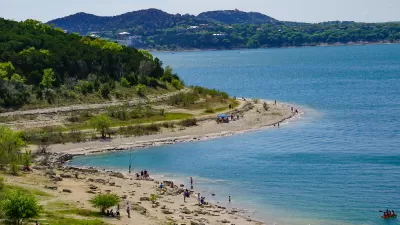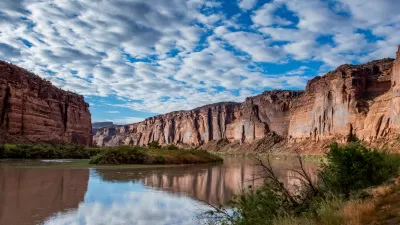Small desert communities are looking for ways to conserve water as their tourist and resident populations grow.

Like southern Utah and other scenic regions of the U.S. Southwest, West Texas is seeing dramatic growth as more people discover its natural beauty, relatively low-cost real estate, and cultural amenities.
This rapid growth is prompting concerns about whether the region’s water supply can keep up, writes Sarah Melotte in The Daily Yonder. “A survey conducted by Big Bend National Park showed that more than half a million people visited the park in 2022, a 12% increase since 2019, the last year the park was open full-time before the pandemic.”
Meanwhile, Brewster County added 4,700 short-term rental units between 2021 and 2023, and more people are moving to the area’s rural communities seeking space and solitude. Melotte points out that rural communities tend to use less water per housing unit than urban areas. However, “For a well to be approved by the Texas Commission on Environmental Quality (TCEQ), it has to be able to produce 40 gallons per minute from every connection,” regardless of its location or the type of housing unit it serves.
Melotte notes that a new assistance program from the Texas Water Development Board, the Texas Water Fund, seeks to help small communities manage their water resources and provide technical assistance for water conservation projects.
FULL STORY: More Folks Are Falling in Love with the West Texas Desert. Will There Be Enough Water to Sustain Them?

Alabama: Trump Terminates Settlements for Black Communities Harmed By Raw Sewage
Trump deemed the landmark civil rights agreement “illegal DEI and environmental justice policy.”

Planetizen Federal Action Tracker
A weekly monitor of how Trump’s orders and actions are impacting planners and planning in America.

The 120 Year Old Tiny Home Villages That Sheltered San Francisco’s Earthquake Refugees
More than a century ago, San Francisco mobilized to house thousands of residents displaced by the 1906 earthquake. Could their strategy offer a model for the present?

LA’s Tree Emergency Goes Beyond Vandalism
After a vandal destroyed dozens of downtown LA trees, Mayor Karen Bass vowed to replace them. Days later, she slashed the city’s tree budget.

Sacramento Leads Nation With Bus-Mounted Bike Lane Enforcement Cameras
The city is the first to use its bus-mounted traffic enforcement system to cite drivers who park or drive in bike lanes.

Seattle Voters Approve Social Housing Referendum
Voters approved a corporate tax to fund the city’s housing authority despite an opposition campaign funded by Amazon and Microsoft.
Urban Design for Planners 1: Software Tools
This six-course series explores essential urban design concepts using open source software and equips planners with the tools they need to participate fully in the urban design process.
Planning for Universal Design
Learn the tools for implementing Universal Design in planning regulations.
Ada County Highway District
Clanton & Associates, Inc.
Jessamine County Fiscal Court
Institute for Housing and Urban Development Studies (IHS)
City of Grandview
Harvard GSD Executive Education
Toledo-Lucas County Plan Commissions
Salt Lake City
NYU Wagner Graduate School of Public Service





























